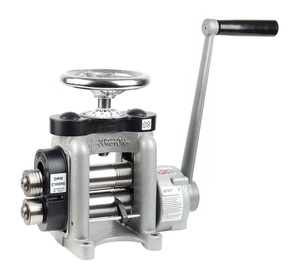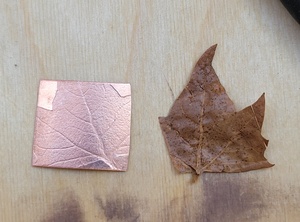
Rolling is a technique that can be used to thin, flatten, texture, or curve metals. Most rolling mills used in jewelry consist of two equal-sized wheels that counter-rotate. When a piece of metal is passed in between the wheels, they compress it, thinning the piece. There are also types of rollers that are designed to curve metal sheets, but they are less common in jewelry.

Process
Metal sheets should be annealed before rolling so they are soft enough to deform. If the goal is to thin the piece, the rollers should be set to an appropriate distance and the piece should be passed through while the rollers are spinning. If the goal is to texture the piece, then the piece should be passed through along with a textured surface to be imprinted. Texturing surfaces can be anything, but they should not be something that can damage the rollers (i.e. a hard metal or something wet that can cause rust). Texturing surfaces are often deformed or destroyed by the process, especially natural surfaces such as leaves and plastic surfaces such as mesh.
If the piece is to be thinned significantly, multiple rolling steps may be needed. The piece should be annealed in between each rolling step.
While rolling, you must take care to not let your fingers, any other body part, loose clothing, or hair become trapped between the rollers, the machine's gears, or any other part of the machine.
Tools
Surprise, the main tool used in rolling is a Rolling Mill. The mill pictured above, produced by Durston1, has a flat area on the rollers for flattening sheets and wires, and a grooved section for rolling a round wire profile. Some mills have V-shaped grooves for rolling square wire, and others have round grooves on only one roller to make D-shaped profiles.